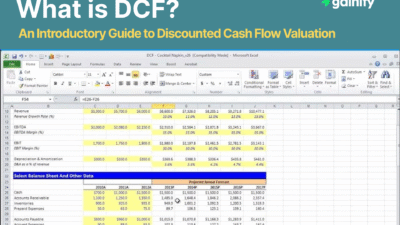Why Investors Need to Understand Bankruptcy Basics?
When a public company files for bankruptcy, it sends shockwaves through shareholders, creditors, and the broader financial markets.
If you own common stock shares in a company that declares bankruptcy, you may be surprised by how fast things can unravel. Despite the occasional bankruptcy news hits for stocks on major stock exchanges, many investors remain unclear on the bankruptcy process, the legal order of payouts, and what happens to share prices once a company becomes insolvent.
This article explains exactly what happens to company stock in the event of bankruptcy, why common stockholders are often left with nothing, and how the bankruptcy proceedings unfold under federal bankruptcy laws.
Whether you are a cautious investor, exploring the fundamentals of bankruptcy investing, or simply looking to understand how business-related bankruptcies affect the stock market, this guide offers expert insights based on actual bankruptcy filings, 8-K disclosures, SEC reports, and the views of authoritative experts in corporate finance and bankruptcy law.
Quick Answer: What Happens to Stock When a Company Goes Bankrupt?
In most cases, common stock owners lose their entire investment.
A company under bankruptcy protection generally cannot meet its debt obligations, and during bankruptcy proceedings, creditors are paid first.
By the time assets for cash are distributed to settle debts to investors, there’s rarely anything left for equity holders.
The Legal Process: What Bankruptcy Means for Stocks
Bankruptcy is a structured legal process governed by the U.S. bankruptcy code. It is designed to allow an insolvent company to reorganize its debt payments or liquidate company assets in an orderly manner. Companies in bankruptcy can choose to file for:
- Chapter 11 bankruptcy, a form of bankruptcy reorganization allowing the company to continue operations under a court-approved financial recovery plan
- Chapter 7 bankruptcy, which results in full liquidation of the bankrupt corporation, ending all business activity
Once the actual bankruptcy filing is made, the company typically files for bankruptcy protection under Chapter 11. This decision of bankruptcy must be disclosed to shareholders and regulators through an 8-K filing, which is reviewed by the stock exchange.
If the company fails to meet listing requirements, its shares are delisted and may begin trading over the counter under modified stock symbols (e.g., adding a “Q” suffix).
Priority of Payouts: Where Common Stock Ranks
In the bankruptcy process, the court prioritizes how the company’s remaining assets for cash are distributed:
- Secured creditors (typically banks or bondholders with collateral)
- Unsecured claims (such as unsecured debts to vendors, administrative expenses, and legal expenses)
- Preferred shares
- Common stock shareholders
Common shareholders are at the bottom of this hierarchy. By the time credit card debt, payroll, taxes, and debts to investors are paid, there is usually nothing left for common stock owners.
This pecking order is enforced under bankruptcy law, and it applies to both U.S.-based and cross-border bankruptcies. Even in the best-case scenario, when a company in bankruptcy may survive, existing shareholders are usually diluted or completely wiped out.
Why Bankrupt Stocks Sometimes Still Trade
Despite the financial distress, shares of a company in bankruptcy may still trade, albeit at extremely low levels. This phenomenon is known as bankruptcy speculation. Day traders and speculative investors often buy shares of a bankruptcy company hoping for a quick bounce based on bankruptcy announcements, rumors, or retail momentum.
However, this is typically a dicey business. Once the court finalizes a repayment plan or liquidation strategy, old shares are canceled and replaced with new ones, if any equity survives at all. In the vast majority of cases, stock price quickly declines to near zero.
Chapter 11 vs. Chapter 7: What’s the Difference?
Chapter 11: Bankruptcy Reorganization
Under Chapter 11, the company from creditors receives protection from creditors while it works on a detailed plan to reduce debt, restructure operations, or attract new investment. This often involves transferring control to creditors or issuing new shares to senior creditors. Existing shareholders typically lose proportion of ownership or are eliminated entirely.
Chapter 7: Liquidation
In this form of bankruptcy protection, the company ceases operations, and its assets are sold to pay off debts. There is no opportunity for financial recovery. For common stockholders, this usually means a complete loss.
Can You Sell Stock in a Bankrupt Company?
Yes, but you may face restrictions. If the company is delisted, its stock moves to over-the-counter markets. You might still be able to sell it through your broker, although many brokerage services limit or block trading in bankrupt stocks. Even when trading is allowed, daily stock volume is low and stock price is extremely volatile.
You may want to consult a financial advisor or even a bankruptcy attorney if you’re unsure of your rights during the bankruptcy proceedings. Selling early is often the only chance to recover a small portion of your investment.
Real-World Examples of Bankruptcy and Stocks
Many well-known companies have gone through bankruptcy proceedings, and while some survive in a new form, the outcome for common stockholders is often the same: a total loss. These examples illustrate a range of bankruptcy outcomes – from liquidation to rare, successful turnarounds.
- Lehman Brothers (2008): One of the most infamous corporate bankruptcies in history, Lehman Brothers collapsed during the global financial crisis. The company filed for Chapter 11 bankruptcy, triggering a major financial panic. Its operations were dismantled and sold off, and common stock shareholders were completely wiped out. Lehman no longer exists as a functioning business.
- Hertz Global Holdings (2020): Hertz filed for Chapter 11 after the COVID-19 pandemic devastated the travel industry. Initially, its stock price collapsed, and it was assumed common shareholders would lose everything. However, the company underwent a successful reorganization, emerged from bankruptcy under new ownership, and was relisted on the Nasdaq in 2021. That said, original common stockholders saw their shares canceled and replaced with new equity. Hertz continues to operate globally under its iconic brand.
- JC Penney (2020): After years of declining sales and growing debt, JC Penney entered Chapter 11 bankruptcy and was delisted. Its retail operations were later sold to Simon Property Group and Brookfield Asset Management. While the stores still exist under the JC Penney name, the original company was dismantled and common shareholders received nothing.
- Bed Bath & Beyond (2023): Struggling with collapsing sales, weak online strategy, and mounting debt, the retailer filed for Chapter 11 bankruptcy and began liquidating assets. Most of its stores were closed, and the brand was later acquired by Overstock.com. The company ceased to exist in its original form, and common shareholders lost their entire investment.
- FTX Trading Ltd. (2022): Though not a stock in the traditional sense, FTX’s bankruptcy shows how catastrophic the collapse of a financial company can be for equity holders. After allegations of fraud and insolvency, the company filed for bankruptcy protection. Investors, including employees and early equity backers, saw the value of their shares drop to zero.
Key Lessons for Investors
These examples show that:
- Not all bankrupt companies disappear, but existing stockholders usually do not benefit from any recovery. In nearly every case, common stock was canceled during the reorganization or liquidation.
- Ongoing operations do not mean shareholder recovery. A company may still function after bankruptcy under new ownership or structure, but prior equity is rarely preserved.
- Bankruptcy signals are often subtle until it’s too late. By the time a bankruptcy company becomes front-page news, the stock price has usually collapsed, and investors have little chance of exiting with value.
In short, a functioning brand or business does not guarantee value for shareholders, especially for those holding common stock shares. Bankruptcy typically prioritizes creditors, not equity claimants, and any chance at success belongs to the reorganized firm – not its original stockholders.
Can Bankruptcy Affect Your Credit Score?
If you are a shareholder or bondholder, personal bankruptcy does not apply to you. Your credit score is not affected by holding stock in a company with bankruptcy protection. However, if you are a business owner or directly liable for the company’s debts, personal implications may arise depending on corporate structure and guarantees.
Final Thoughts
When investing in equities, it is essential to remember that common stock shareholders stand at the bottom of the financial ladder. In the event of bankruptcy, even strong brands can become bad investments. Understanding the rules of bankruptcy law, your class of stock, and the legal process can help you avoid losses and make informed decisions.
Bankruptcy is a tool of financial restructuring, not a guaranteed path to recovery. For investors, it usually means accepting losses and learning from the experience. As always, rely on unbiased content from reputable publishers, white papers, and editorial policy-compliant sources to guide your decisions.
Frequently Asked Questions
Q: What happens to my common stock when a company declares bankruptcy?
A: In most cases, your common stock becomes worthless. Shareholders are last in line during bankruptcy proceedings, behind creditors and preferred shareholders. If no value remains after debts are settled, common stockholders receive nothing.
Q: Why do people still buy stock in bankrupt companies?
A: Some investors engage in bankruptcy speculation, hoping to profit from short-term price movements. While bankrupt stocks may trade for a time on over-the-counter markets, these investments are extremely risky and typically result in total losses.
Q: Can I claim a tax loss after a stock becomes worthless due to bankruptcy?
A: Yes. If your shares have lost all value, you may be eligible to claim a capital loss on your tax return. It’s important to document the actual bankruptcy filing or delisting, and consult a tax advisor for accurate reporting.
Q: Do preferred shareholders fare better than common stockholders?
A: Generally, yes. Preferred shares are higher in the class of creditors, meaning they may receive partial payouts before common shareholders. However, if a company’s remaining assets are insufficient, even preferred shareholders may recover little or nothing.
Q: How do I know if a company is at risk of bankruptcy?
A: Watch for warning signs like missed debt payments, negative cash flow, postponed earnings reports, and rising debt obligations. Deteriorating credit reports, high short interest, and sudden changes in executive leadership may also be bankruptcy signals.
Q: Can a company survive bankruptcy and continue operating?
A: Yes. Under Chapter 11 bankruptcy, a company may restructure under court supervision and emerge with a new financial recovery plan. However, this often involves canceling or replacing common stock, leaving original shareholders with little or no value.
Q: Is it ever wise to invest in a company under bankruptcy protection?
A: Only in rare, highly calculated situations. While bankruptcy investing can produce gains in unique cases, it carries high risk. For most investors, it’s safer to wait until the company stock is reissued or the business emerges with a new capital structure.
Disclaimer
This content is for informational purposes only and does not constitute financial, legal, or investment advice. Investing in distressed or bankrupt companies carries significant risk, including the potential loss of your entire investment. Readers should conduct their own research or consult with qualified professionals such as a licensed financial advisor, tax expert, or bankruptcy attorney before making any investment decisions. While efforts have been made to ensure the accuracy of the information presented, no guarantees are made regarding its completeness or applicability. The publisher is not responsible for any losses or actions taken based on the content provided.




